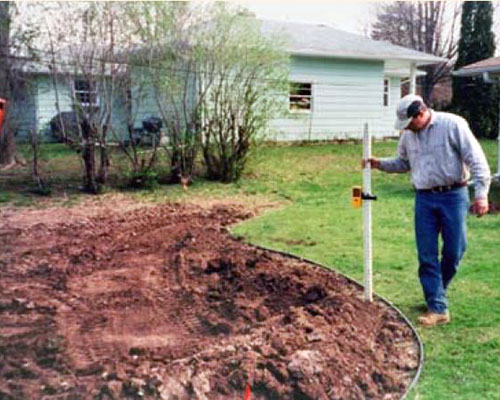Photograph courtesy of Roger Bannerman, Wisconsin Department of Natural Resources.

Melinda’s Garden Moments is heard Mon.-Fri. at 7:45 and 10:45 a.m. and 4:45 p.m. on WHAV.
Don’t let the all that valuable rainwater go down the storm sewer. Instead, put it to work growing a beautiful garden in your landscape.
Install a rain garden to capture the rainfall that runs off your roof, walks, patio, and other hard surfaces. These gardens capture excess water, filter it through plant roots and soil and then allow it to recharge the ground water below.
Do a bit of research and call 811, the free utility locating system, before you dig in. Proper planning will increase the effectiveness and beauty of your garden. Rain gardens should be at least 10 feet away from your house. Locate the garden on a slight slope using swales, downspouts, and underground PVC to direct water to it. And keep the garden away from septic systems and trees.
The depth of your garden depends on soil type, garden size, and rainfall. Amend the soil with organic matter and fill with plants suited for your climate, flooding and drought.
A bit more information: Check with your local extension service or department of natural resources for information on installing rain gardens in your area. Many have lists of plants suitable to rain gardens in your climate. And review Rain Gardens: A how-to manual for homeowners at http://clean-water.uwex.edu/pubs/pdf/gardens.pdf for a step-by-step overview on installing a rain garden.
For more gardening tips, how-to videos, podcasts and more, visit www.melindamyers.com.

